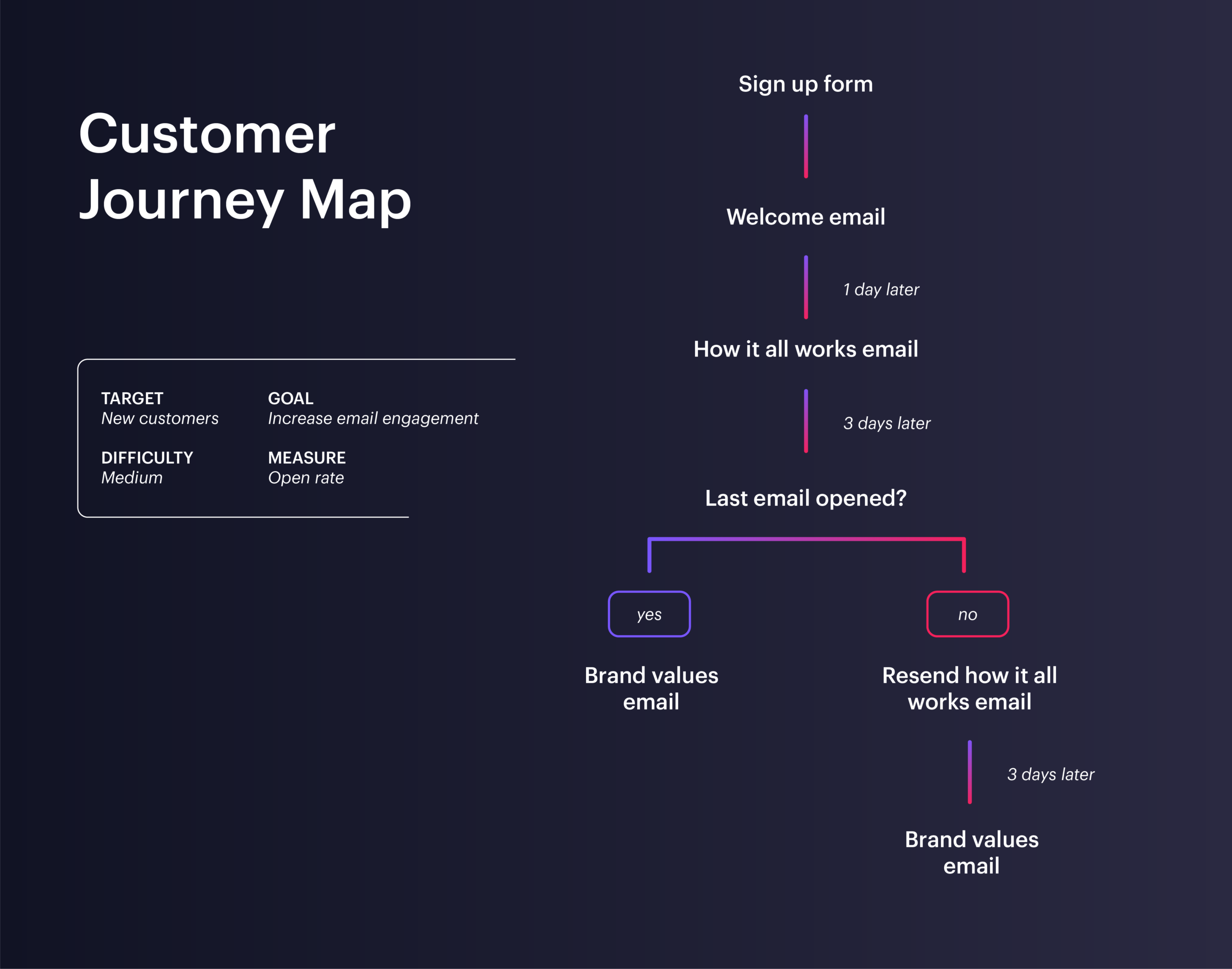The tools available to marketers continue to evolve every year and, while platforms and channels may change, emails remain an effective way to keep customers engaged with your products or services.
Once you’ve built your subscriber list, it’s important to use it effectively, and different situations will call for different approaches.
Learn to build an email list by watching our video.
Knowing what the difference between an email and a campaign is will be the first step to developing an effective marketing strategy. Read on to discover that difference, why it matters, and how to measure your strategy’s effectiveness.
What are single emails and campaigns?
Single emails are one-off emails, like promotions or newsletters, whereas campaigns typically build a journey for your subscribers.
Deciding on which type of email marketing strategy will work for you depends on your subscribers. You only have seconds to create an impression with your emails, and this means you’ll need to get the basics right the first time—whether you’re using a single email or a campaign.
What exactly does a campaign do, though? Well, email campaigns are the first step towards creating a customer journey. It’s a set of predetermined emails triggered by certain customer events. With email campaigns, customers may receive more emails, but they’ll depend on the customer’s behavior.
Individual emails and drip campaigns
Marketers can opt to send out individual emails or regularly scheduled updates about their products and services.
Many customers prefer this method, but it usually works best as a pre-sales strategy. Individual emails are a good way to keep customers who don’t regularly log in to your site updated about the latest developments.
Drip campaigns are pre-written, ongoing campaigns that move email subscribers toward a final conversion point. They provide value to subscribers on an extended basis, while also keeping up brand awareness. These emails slowly “drip” helpful information, products, or tips over the days, weeks, or months.
Customer journeys
The best option available for today’s marketers is to understand that every customer goes through a specific journey. Customers may happen on the site, sign up for more information, and find a product or service they want to buy in an email. Customer journeys improve retention, increase revenues, and help with word-of-mouth marketing.
Marketing emails should have a 20-30% opening rate for your strategy to be effective.
Source: Forbes
Customer experiences remain the most important element that marketers should consider. Sending too many emails will negatively affect open rates.
Sending too few may lead to subscribers wondering why they signed up to the list in the first place. Customer journeys shouldn’t end with converting a lead to a sale either. Mapping out post-sales onboarding journeys is just as important for marketers.
Here are the stages of the customer journey:

Get the customer journey guide.
How to measure the success of your emails and campaigns
Regardless of which option you choose, you should use analytics to measure your strategy’s success. Drip campaigns or sending out single emails every so often may work for specific scenarios. For others, designing a campaign that uses specific data points to determine what email to send is the best option.
With email campaigns and customer journeys, you can use subscriber behavior to automate the emails you’re sending out. This reduces the burden on your marketers and ensures you deliver a personalized message to customers when they reach a specific point in their journey with your brand.
Does it really matter?
The type of content and the frequency of your marketing emails will influence your subscribers, so you’ll need to devise a strategy that suits them. Once you’ve converted a lead into a customer, you should consider moving to a campaign or journey.
Creating a complete lifecycle for your customer’s journey remains the best strategy, as it allows you to automate sending out different types of emails triggered by an event.
What now?
Having an effective email marketing strategy will depend on your subscriber list. If you’ve grown your lists using single emails sent infrequently, it’s not a good idea to change it now. In other situations, you may want to map out your customer’s journey and use a campaign to increase engagement and revenues.
In marketing, every type of communication matters. Whether you send out single emails or build an entire campaign, you also need to track your performance. You can find more about Campaign Monitor’s metrics from this blog post.